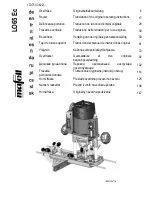
System Components
System Description
1-9
Controller Card Features and Functions
A controller card has these features and functions:
• Processors
The XCRP and XCRP3 Controller cards have two processors. One processor runs low-level software,
including device drivers and equipment management software; the second processor runs the routing
and broadband remote access server (BRAS) software. The XCRP4 Controller card has four processors:
one processor runs the low-level software and the other three processors run the BRAS and routing
software.
• Main memory
Synchronous dynamic RAM (SDRAM) is used by the SmartEdge OS shared databases that are
accessed by the traffic cards.
• NVRAM with battery
Each of the XCRP3 and XCRP4 Controller cards include 512 KB of non-volatile RAM (NVRAM),
which stores the current state of the system; because NVRAM is not affected by power failures or
system shutdown, the system can restore operations after such events. The NVRAM battery on the
XCRP4 Controller card is rechargeable; it is recharged from the power supplied to the SmartEdge router
during normal operations. The battery typically lasts more than two years when fully charged and
without benefit of being recharged by being powered on.
• Internal, system, real-time, and time-of-day clocks
The internal clock onboard the XCRP and XCRP3 Controller cards is a Stratum 3 oscillator at ±4.6 ppm
that supports free-run, normal, and holdover modes; the internal clock on an XCRP4 Controller card is
a SONET minimum clock (SMC) at ±20.0 ppm in free-run and normal modes only.
The system clock refers to the clock that performs system hardware timing functions, regardless of the
source of its timing data. Using the SmartEdge OS, you can specify external equipment (external timing
mode), the received clock of a traffic card (line timing mode), or the internal clock on the controller card
(internal mode) as the source for the system clock.
The real-time clock (RTC) on the XCRP3 and XCRP4 Controller cards is initialized before the system
is shipped. It is not affected by power failures, system shutdown, or reload. The RTC uses the NVRAM
battery.
By default, the source for the transmit clock for the ports on a traffic card is its onboard clock.
Depending on the type of traffic card, the transmit clock for a port on a traffic card can use instead the
receive clock derived from an incoming signal to the port or the system clock. Because a port does not
interface to the source of the system clock directly, traffic card synchronization is independent of the
type of external timing equipment and the version of the controller card installed in the chassis.
Note
Support for more than one processor to run the BRAS and routing software depends on the
release of the SmartEdge OS.
Note
In a chassis with two controller cards, both cards must have the same memory configuration.
Note
Support for NVRAM depends on the release of the SmartEdge OS.
















































